All products featured are independently chosen by us. However, SoundGuys may receive a commission on orders placed through its retail links. See our ethics statement.
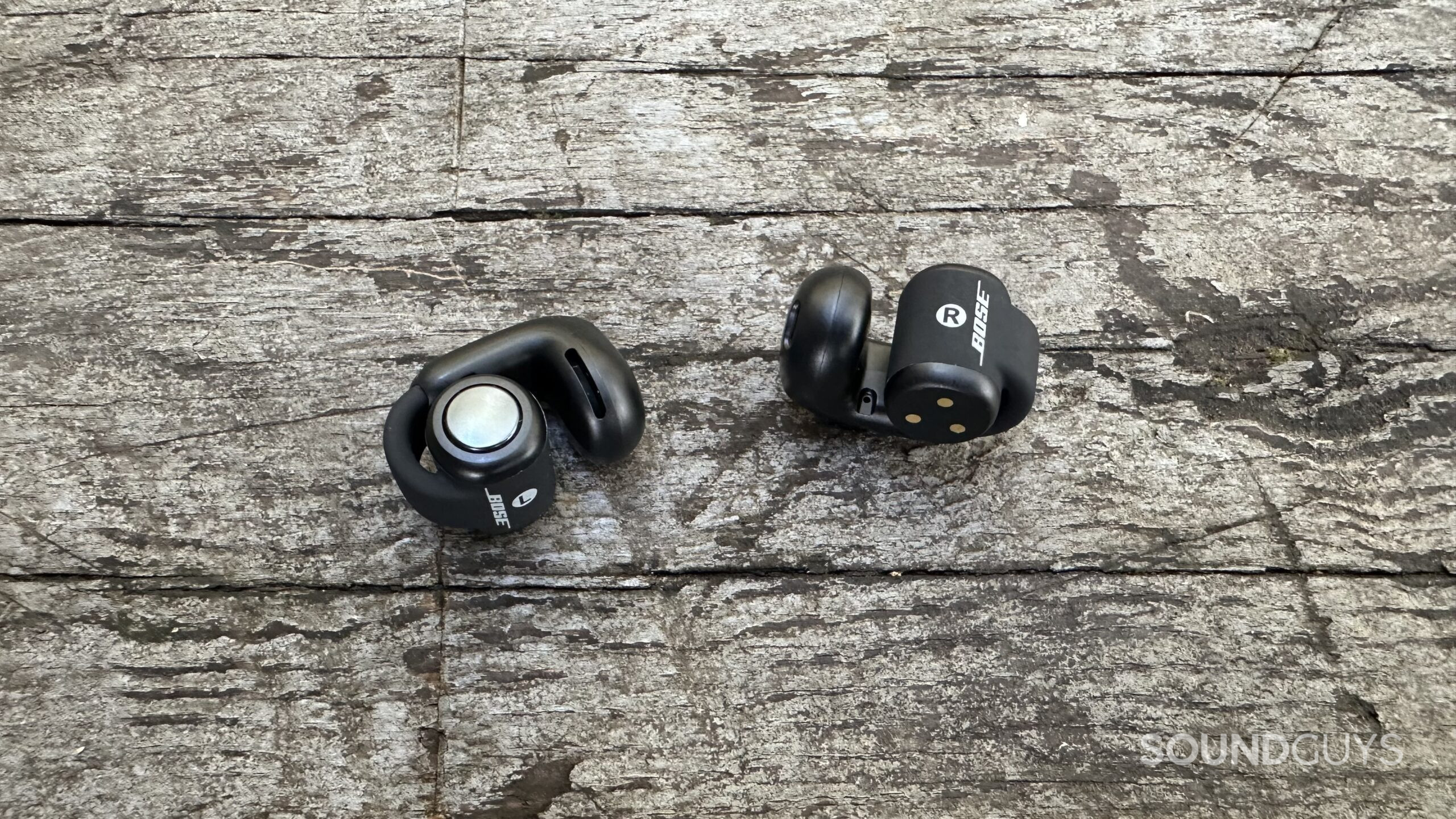
Bose Ultra Open Earbuds review
Published onJuly 10, 2024
Jumping on the current trend of open-ear earbuds, Bose has released their take on the concept with the Ultra Open Earbuds. Popular among athletes, specifically outdoor cardio enthusiasts, this particular style of earbuds places the dynamic driver outside — rather than in — your ear, allowing you to stay aware of your surroundings while listening to music naturally. With their innovative clip-on design, you’ll hear everything from approaching vehicles to other people’s conversations while wearing these open earbuds. Unfortunately, staying aware will cost you some playback bandwidth as a tradeoff. So, let’s dive in and discover what you miss out on for safety’s sake in our Bose Ultra Open Earbuds review.
Editor’s note: this article was updated on July 10, 2024, to note a firmware update that added Bluetooth Multipoint.
The Bose Ultimate Open Earbuds are an ideal choice for outdoor cardio enthusiasts or anyone who wants to stay safe and aware of their surroundings while listening to content.
What’s it like to use Bose Ultra Open Earbuds?
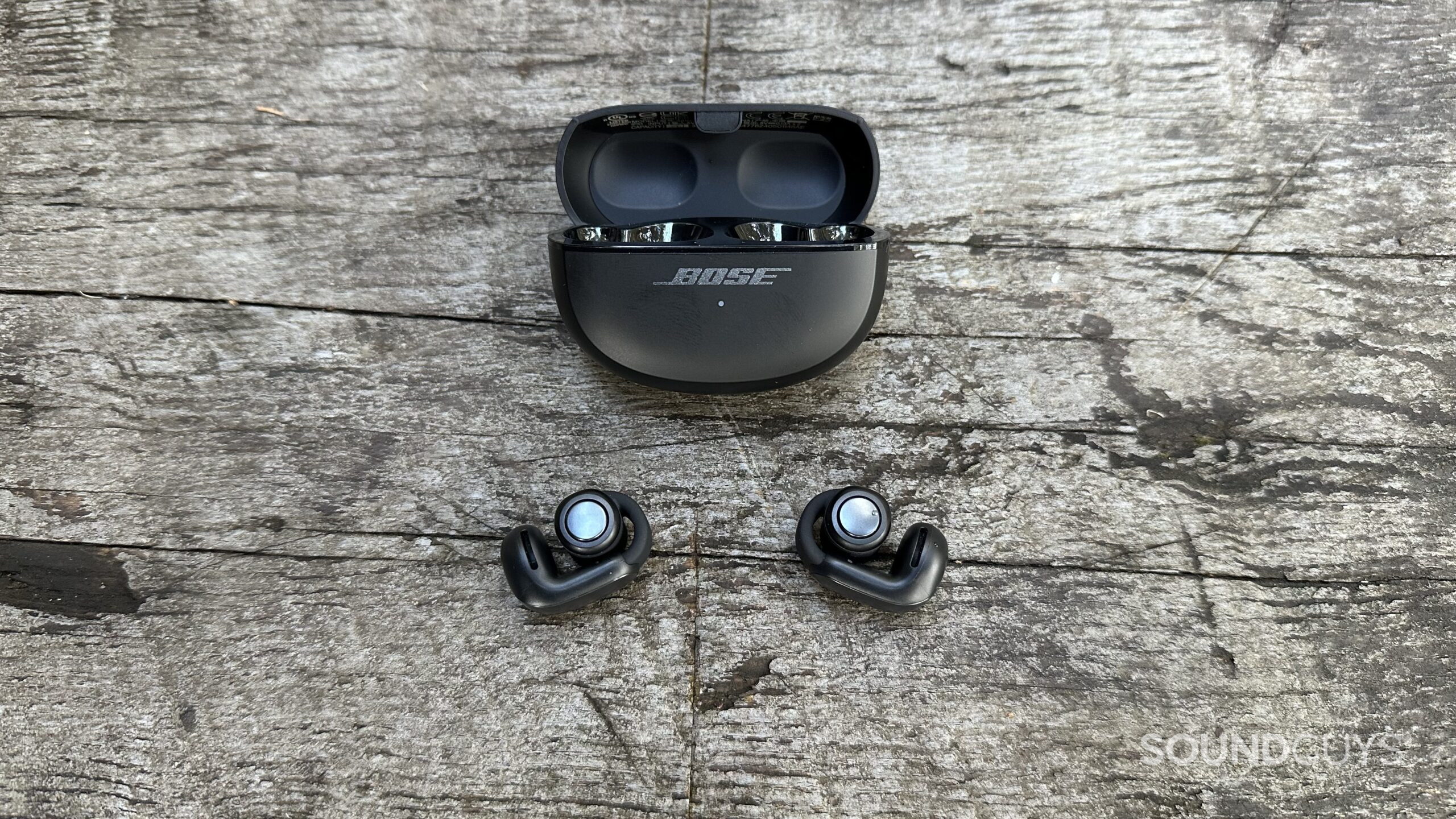
Opening up the Bose Ultra Open Earbuds’ charging case for the first time, you’ll wonder how to wear these earbuds. Their unique clip-on design consists of three parts. The plastic L-shaped piece sits over your ear canal, a flexible rubberized section in the middle that goes around the ridge of your ear to accommodate fit, and the barrel-shaped piece with the electronics and controls that sits behind and hug your ear.
Housed in a charging case with the drivers facing outwards, it takes a bit of getting used to when taking them in and out of the case. Fortunately, they are clearly labeled left and right. These earbuds were good to go once paired, and a lengthy, 45-minute firmware update later.
I had no issues with these earbuds staying in place while cycling downtown or performing any physical activity. With an IPX4 water-resistance rating, you don’t need to be concerned about sweat-related damage from your workout, either. However, the sensation of having this clip-on style on your ears is rather interesting. While they’re not uncomfortable, having something attached to your outer ear is a strange feeling. After using the Bose Ultra Open Earbuds for an extended period, you feel like you’re still wearing them, even when you’re not.
How do you control the Bose Ultra Open Earbuds?
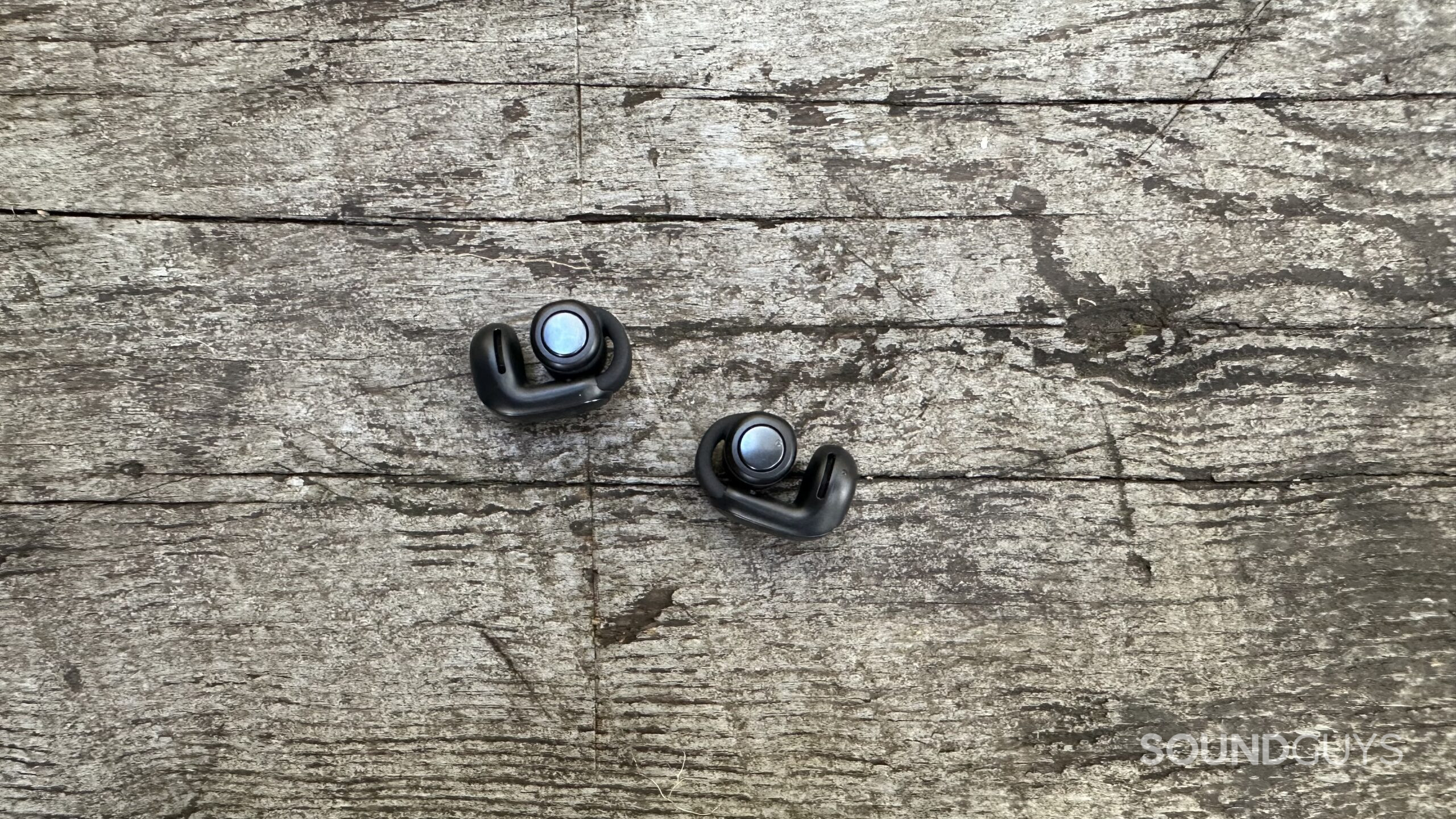
The Bose Ultra Open Earbuds operate via two control buttons, one on the top of each barrel-shaped piece, which rests behind your ear. Here, you can control playback and phone calls and access a shortcut control. Below is how the buttons operate:
| Action | Left Earbud | Right Earbud | ||
|---|---|---|---|---|
| Action Press x1 | Left Earbud Play / Pause / Answer call | Right Earbud Play / Pause / Answer call | ||
| Action Press x2 | Left Earbud Next track / End call | Right Earbud Next track / End call | ||
| Action Press x3 | Left Earbud Previous track | Right Earbud Previous track | ||
| Action Press x1 and hold | Left Earbud Assignable shortcut | Right Earbud Assignable shortcut | ||
| Action Press x2 and hold | Left Earbud Volume - | Right Earbud Volume + |
Each earbud can store one shortcut of your choosing. You can select and assign from Cycling Through Modes (stereo or immersion), Change Immersive Audio (still, motion, off), Switch Devices (the Ultra Open Earbuds can recall up to 6 devices), or Access Your Voice Assistant (you will need the Bose Music app to take advantage of this feature.)
Should you use the Bose Music app for the Bose Ultra Open Earbuds?
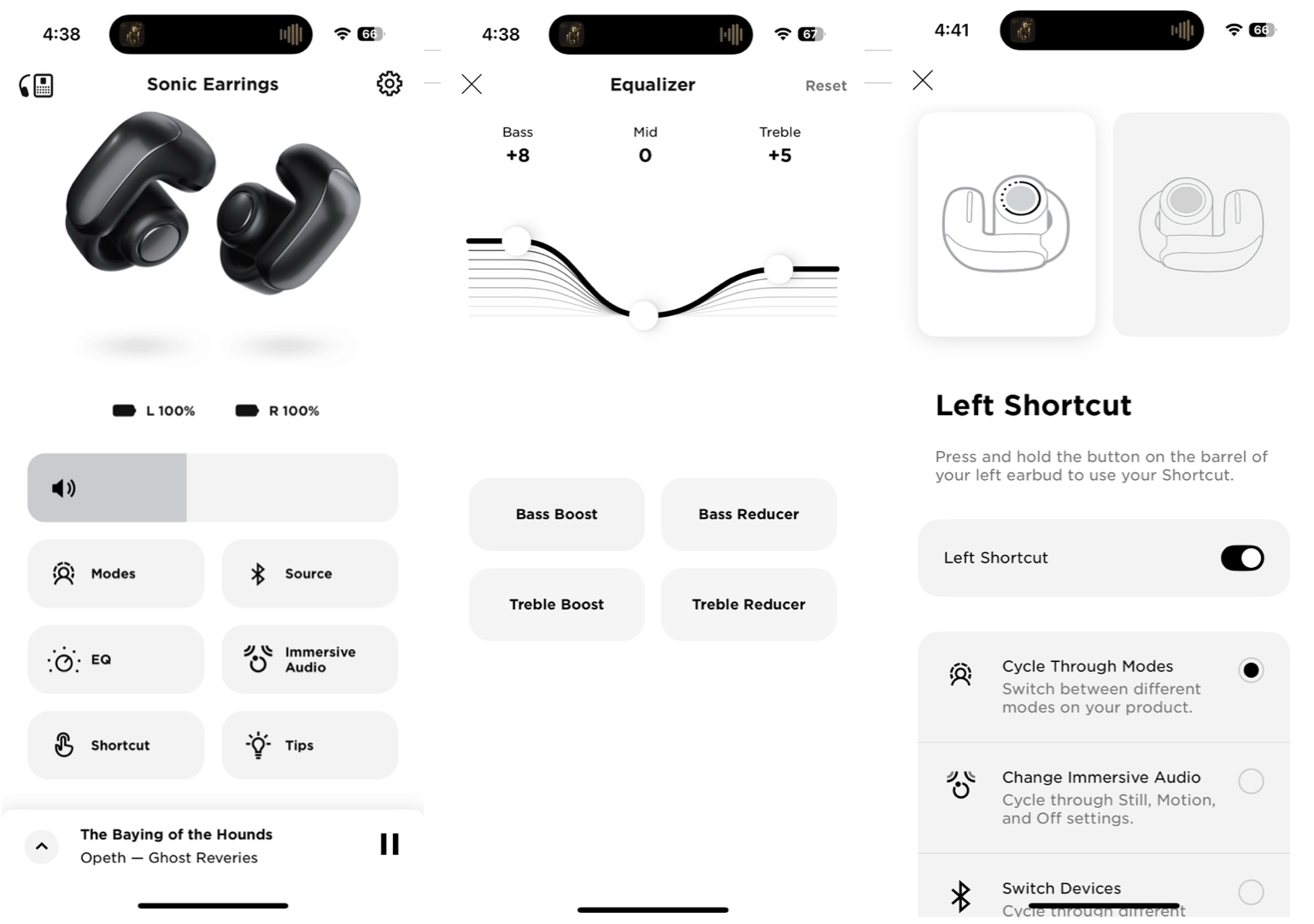
You should download and install the Bose Music app with the Ultra Open Earbuds. While not much to get excited about, you’ll at least want to take advantage of the minimal but better-than-nothing 3-band EQ. You can also assign your shortcut command, switch devices, access Immersive Audio mode, and download any lengthy firmware updates.
The app also allows you to rename your Ultra Open Earbuds and how they appear on your device. While I chose to rename them my “Sonic Earrings,” notable options included “Bliss Buds,” “Groove Grips,” and “Hug Jams.”
How do the Bose Ultra Open Earbuds connect?
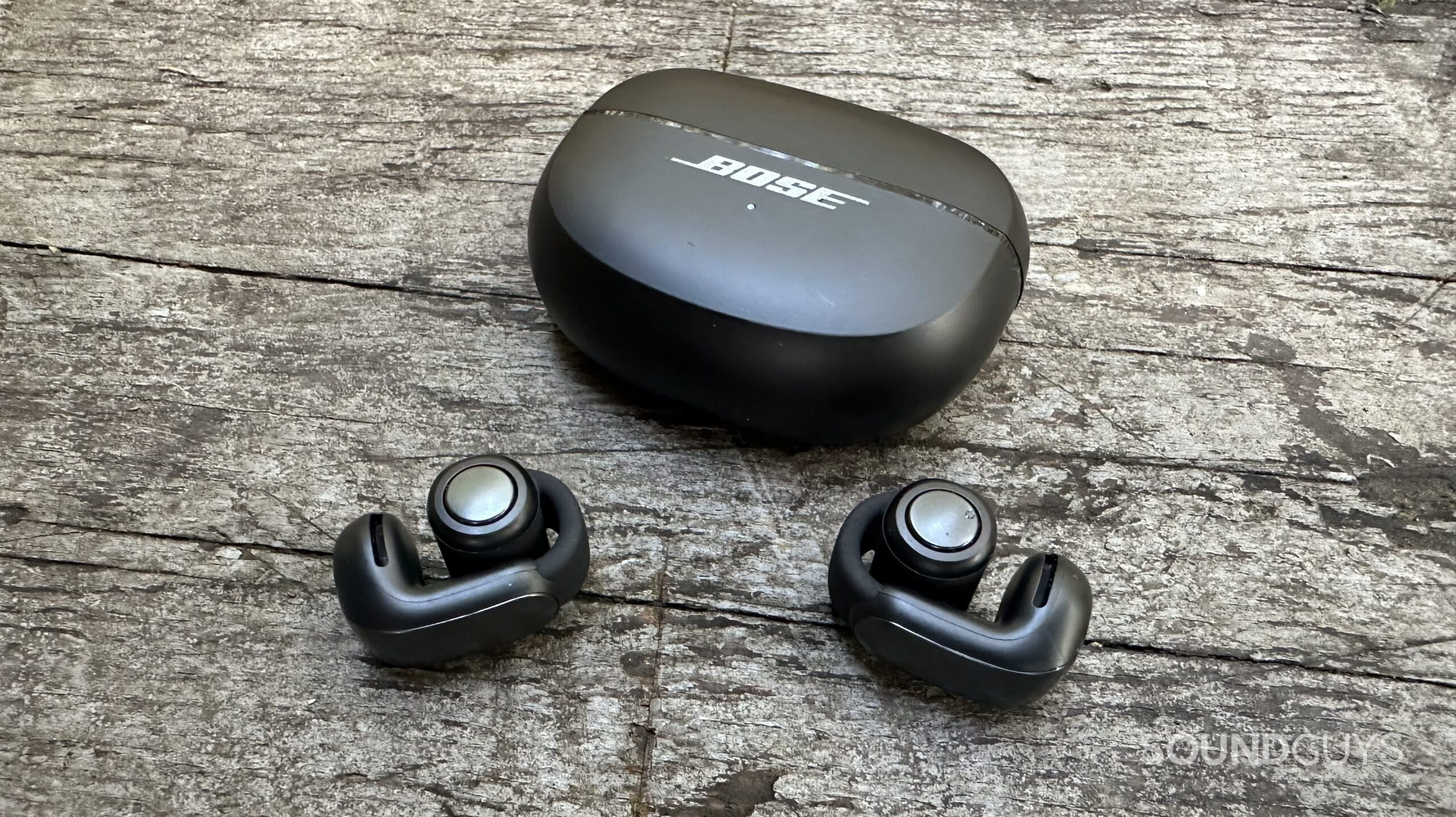
The Bose Ultra Open Earbuds connect to your device via Bluetooth 5.3 and support AAC, SBC, Snapdragon Sound and AptX Adaptive codecs. As of a summer 2024 firmware update, the earbuds support Bluetooth Multipoint to connect to multiple devices at the same time.
The Bose Ultra Open Earbuds connect to your device via the following steps.
- Opening the charging case will automatically put the earbuds in pairing mode, showing two blue lights pulsing slowly.
- To pair a new device, press and hold the pairing button on the back of the charging case. You can store up to 6 devices in the earbud device list.
- Open your Bluetooth settings
- Select Bose Ultra Open Ears.
How long does the Bose Ultra Open Earbuds battery last?
Bose advertises 7.5 hours of playback off a single charge with the Ultra Open Earbuds; in our standardized tests designed to emulate real-world use, the battery life exceeded that expectation, lasting 8 hours and 53 minutes.
Yes, Bose advertises a 10-minute charge will get you an additional 2 hours of playback.
How well do the Bose Ultra Open Earbuds block out noise?
The Ultra Open Earbuds are the opposite of noise canceling earbuds, so they do not block out any outside noise, which, as discussed, is the goal of the open-ear design. Without a seal to the ear canal, outside noise can access your eardrums, interruption-free, to keep your awareness levels up.
A quick note: watching your volume levels when using open-ear products like these is essential. If your surroundings get noisy, you may be tempted to crank up your volume to compensate. As you may know, blasting music at high volumes comes with the risk of noise-induced hearing loss.
How do the Bose Ultra Open Earbuds sound?
With sound quality at the mercy of the open-ear design, how the Bose Ultra Open Earbuds sound heavily depends on your surrounding environment.
Multi-Dimensional Audio Quality Scores (MDAQS)
The chart below shows how the sound of the Bose Ultra Open Earbuds was assessed by the Multi-Dimensional Audio Quality Score (MDAQS) algorithm from HEAD acoustics.
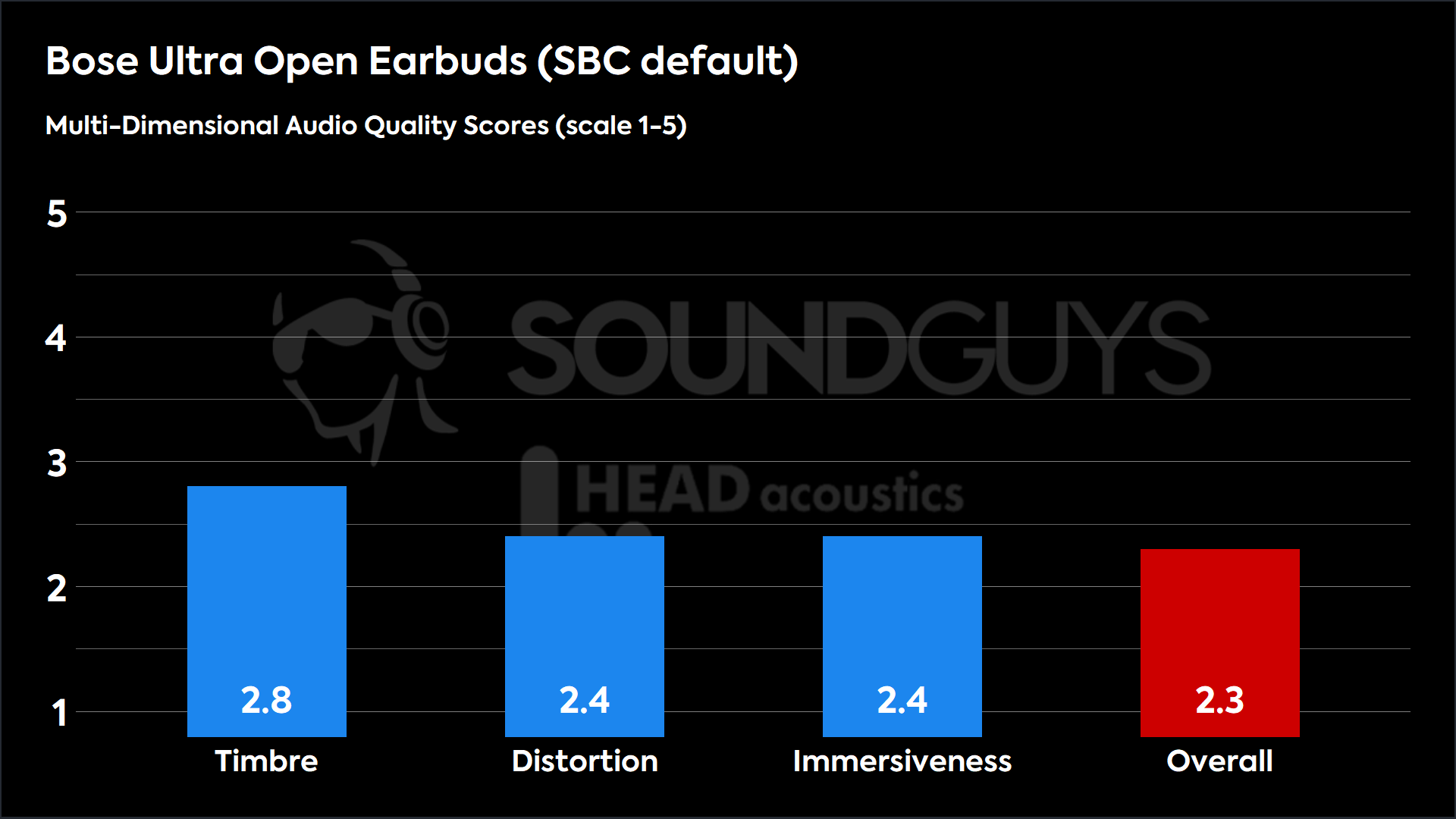
The sonic tradeoffs of the open-ear design become apparent with the Bose Ultra Open Ear’s MDAQS results. Without the ability to produce the low-end that most listeners crave when listening to their music, we see an overall score of 2.3, which is on the low side but par for the course when it comes to open-ear earbuds.
Timbre (MOS-T) represents how faithfully the earbuds reproduce the frequency spectrum and temporal resolution (timing information).
Distortion (MOS-D) represents non-linearities and added noise: higher scores mean cleaner reproduction.
Immersiveness (MOS-I) represents perceived source width and positioning, which is how well virtual sound sources are defined in three-dimensional space.
See here for an explanation of MDAQS, how it works, and how it was developed.
Reviewer’s notes
Since the open-ear, unsealed fit lets your surrounding environment compete with the music you’re listening to, how the Ultra Open Earbuds sound heavily depends on where you’re listening and the activity around you. The irony is that the bass frequencies that usually get you moving take a massive hit with this earbud style.
Without this low-end, songs like Kickstart My Heart, a classic Mötley Crüe pump-up tune that kicks into a thumping “four-on-the-floor” drum beat, falls flat and lacks any energetic impact, not to mention the almost non-existent bass guitar line. In a downtown setting, with my music competing against traffic and city bustle, I’m left with a relatively thin and distant-sounding listening experience to keep my motivation up. While the mid-range “bite” of the distorted rhythm guitars dominates the mix, the guitar leads at 1:48 are searing with additional treble, causing me to reach for the volume controls to turn it down instantly.
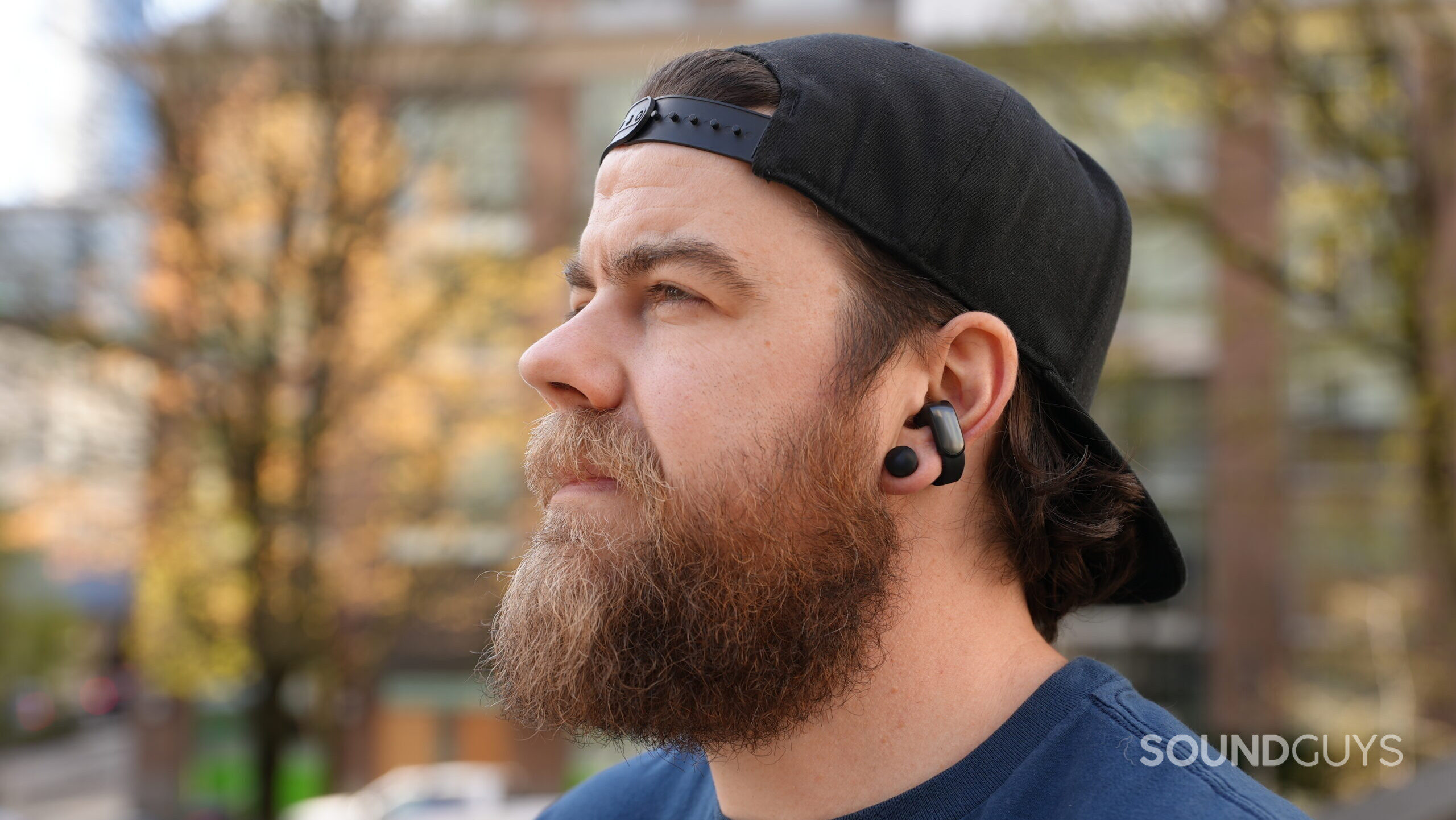
Using the 3-band EQ via the companion app and boosting the available bass slider to +8 made a slight difference when listening to Sunset by The Midnight. It adds some welcome low-end frequencies to these treble-heavy earbuds, but these added frequencies are still masked anytime a large vehicle drives by. That being said, I could hear approaching cars and the conversations of people I passed on the street, which is the goal of these earbuds.
With city noise, traffic, and these earbuds fighting for attention, it’s hard to find that middle ground that leads to an enjoyable listening experience with the Bose Ultra Open Earbuds. Ultimately, it was a somewhat distracting exercise to find a balance. I recommend choosing familiar music to keep you fuelled for your workout rather than trying to catch the details of your favorite artist’s new release while out for a run with these.
Trying out the “Immersive Audio” feature, Bose’s take on spatial audio made some unwelcome sonic changes to my music. Rather than “enhancing and adding depth” and “putting me in the music,” as Bose states, it removed further bass frequencies, added more mids, and created a more narrow-sounding sound field, sacrificing the stereo left and right separation. I struggle to understand why an open-ear set of earbuds would offer this feature; I found no practical application for these settings when using them for their intended purpose.
Objective Measurements
Loading chart ...
This is the reality of the open-ear design. In the chart above, the Ultra Open Earbud’s measured frequency response is severely compromised compared to our headphone preference curve. While it lines up in the mid-range, there is no bass response and a sharp spike in the upper midrange frequencies. If you’re new to this style of earbuds, you need to have reasonable expectations. They’re designed with a single purpose, meaning most listeners won’t get them as their only earbuds; you’ll probably need a second pair that offers active noise canceling (ANC) for traveling and commuting.
Can you use the Bose Ultra Open Earbuds for phone calls?
You can use the Ultra Open Earbuds for phone calls, but there’s no way to sugarcoat it. The Ultra Open Earbuds microphone is subpar. While there is clarity in ideal conditions, it still sounds like you’re talking through a High School PA system from 1976.
Bose Ultra Open Earbuds microphone demo (Ideal conditions):
How does the microphone sound to you?
Bose Ultra Open Earbuds microphone demo (Office conditions):
Bose Ultra Open Earbuds microphone demo (Street conditions):
Bose UltraOpen Earbuds microphone demo (Windy conditions):
Bose Ultra Open Earbuds microphone demo (Reverberant space):
The Ultra Open Earbuds struggled to reject any wind noise in our simulated outdoor test, which is disappointing considering they are designed for outdoor use. If you’re out for a run with these earbuds and need to take a phone call, you’ll want to at least slow it down to a walk while chatting for the sake of the person on the other end.
Should you buy the Bose Ultra Open Earbuds?
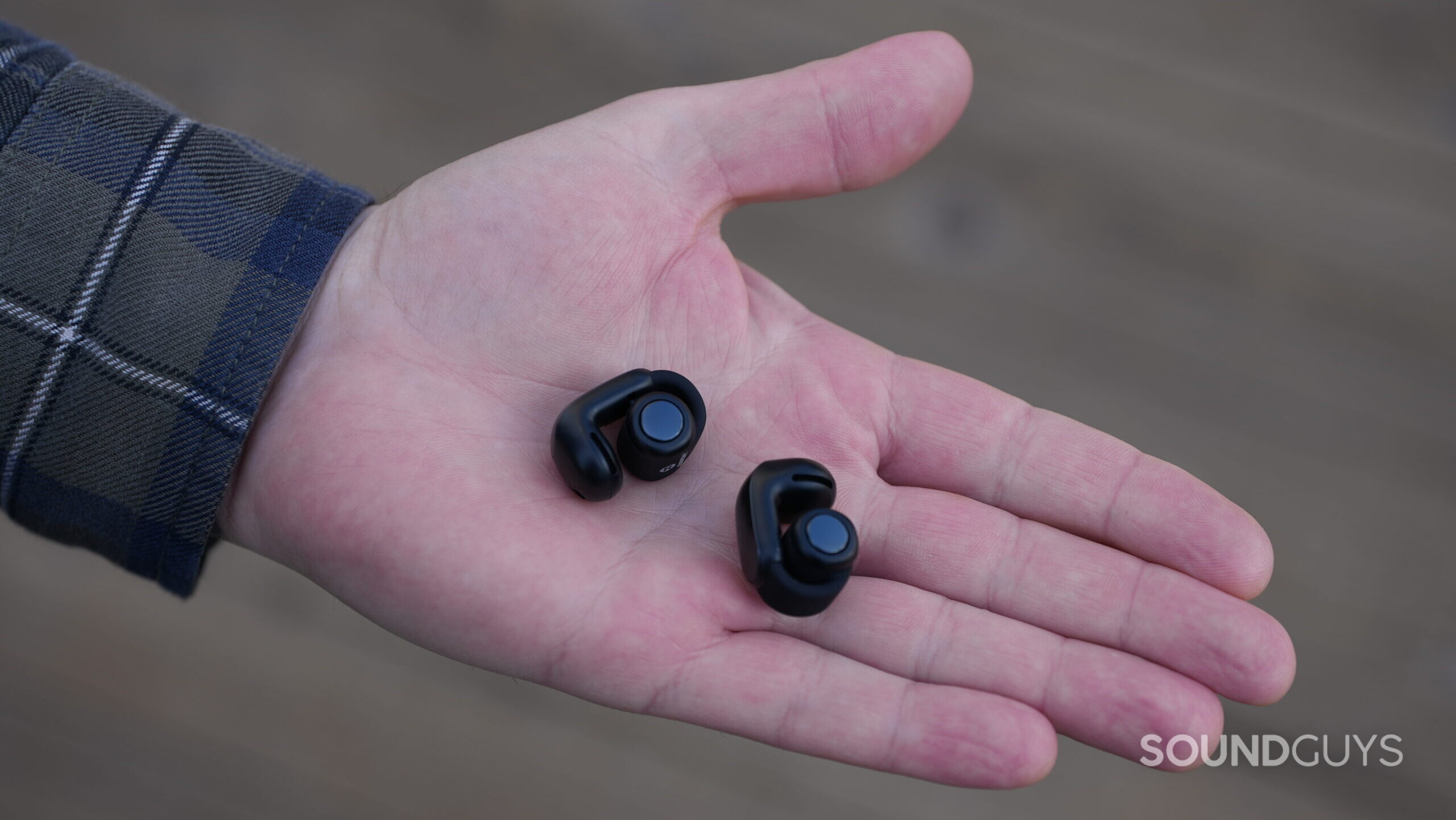
With such a hefty price tag for such limited sound quality and applications, the Bose Ultra Open Earbuds are hard to recommend. While the clip-on style is undoubtedly unique, there are much cheaper alternatives for open-ear earbuds if you genuinely want to stay aware while exercising in busy environments.

What should you get instead of the Bose Ultra Open Earbuds?
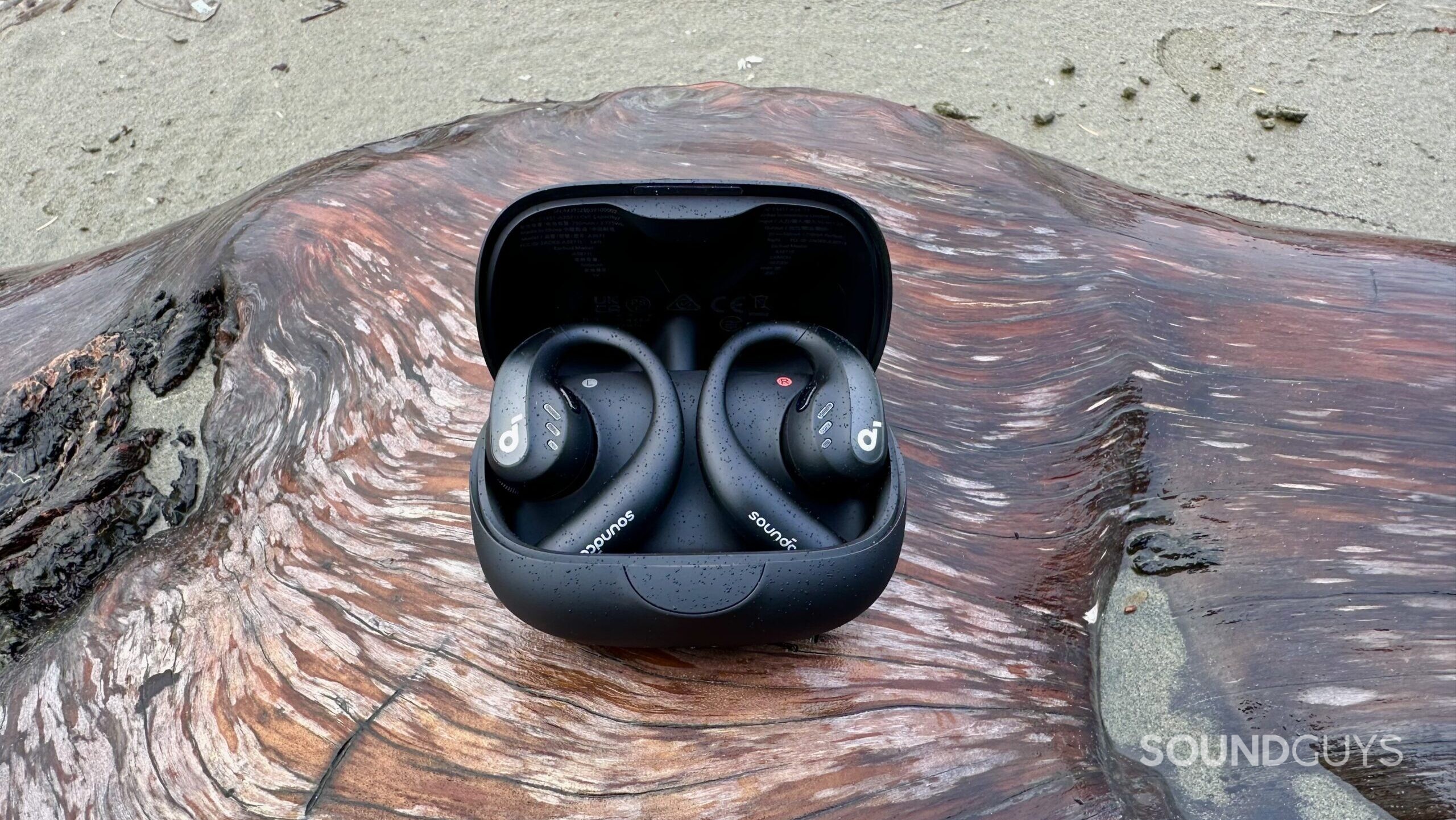
The Anker Soundcore AeroFit Pro ($169.99 at Amazon) are worth a look, and they’ll save you a few bucks too. These open-ear earbuds feature an IPX5 water resistance rating and physical controls and securely stay in place on your ears thanks to their hook-shaped design. The AeroFit Pro also boasts a companion app and a massive 17-plus hour playback time with a single charge.
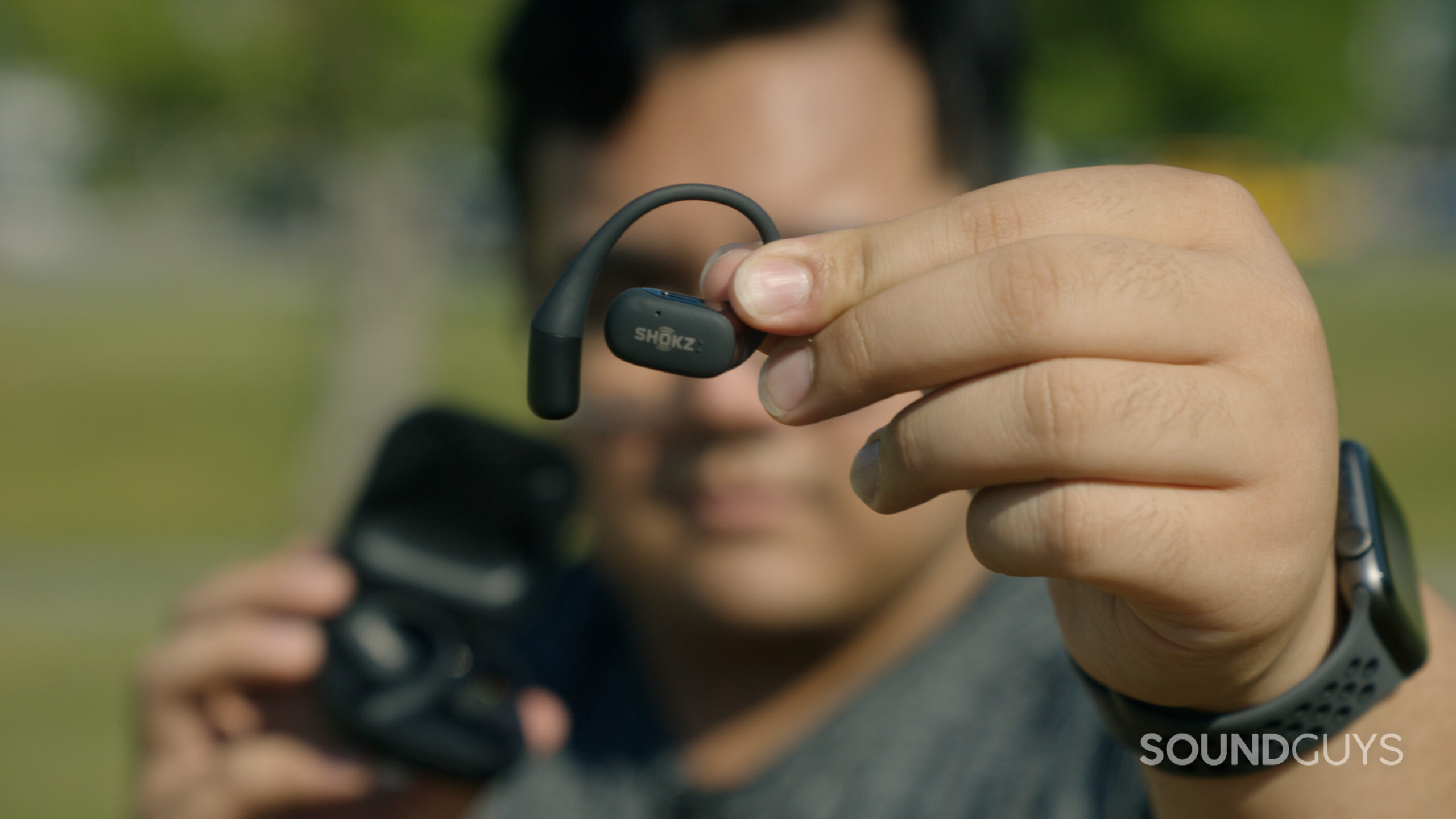
The Shokz OpenFit, ($179 at Amazon), is another option for open-ear earbuds. It offers most of the same benefits and features as the AeroFit Pro, like a companion app with EQ options and even an IPX54 protection rating. However, you will take a hit when it comes to battery life. The Shokz OpenFit only offers 7 hours of playback time.
Frequently asked questions
No, the Bose Ultra Open Earbuds do not have a noise canceling feature, or any acoustic isolation either.
Yes, especially if you want to stay aware of your surroundings while doing so.
Yes, the Bose Ultra Open Earbuds feature an IPX4 water resistance rating.
Yes, you can take phone calls with the Bose Ultra Open Ears.
Yes, the Bose Ultra Open Ears will work with an iPhone.